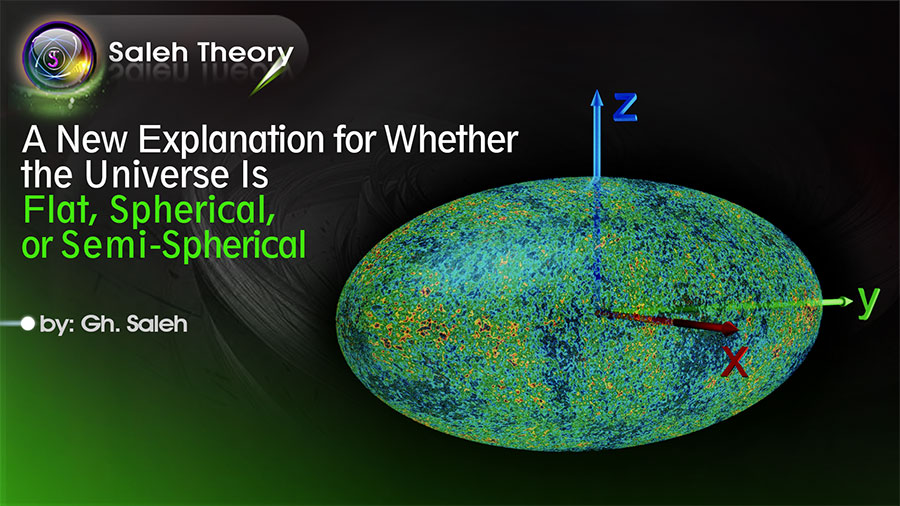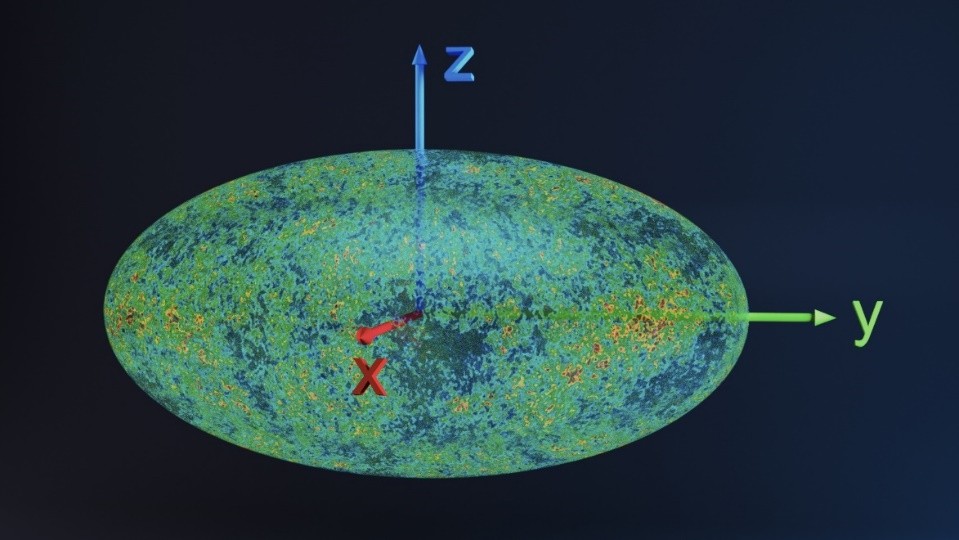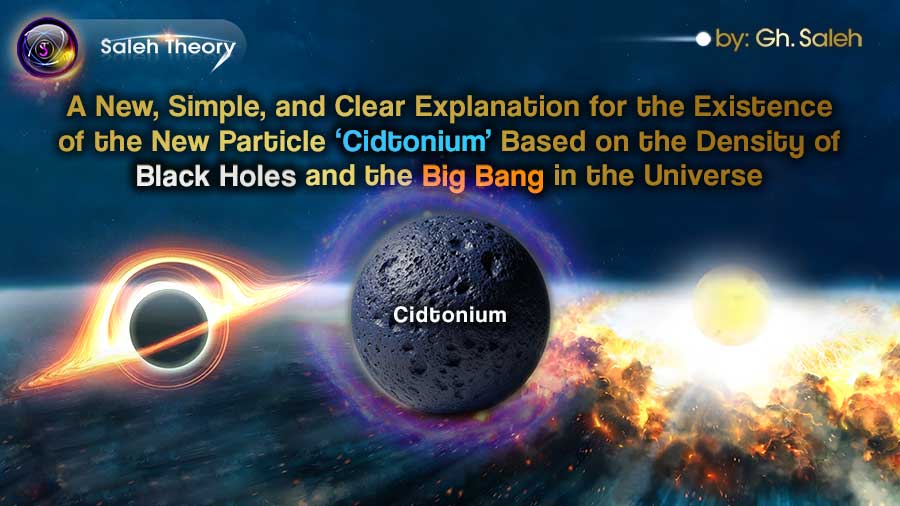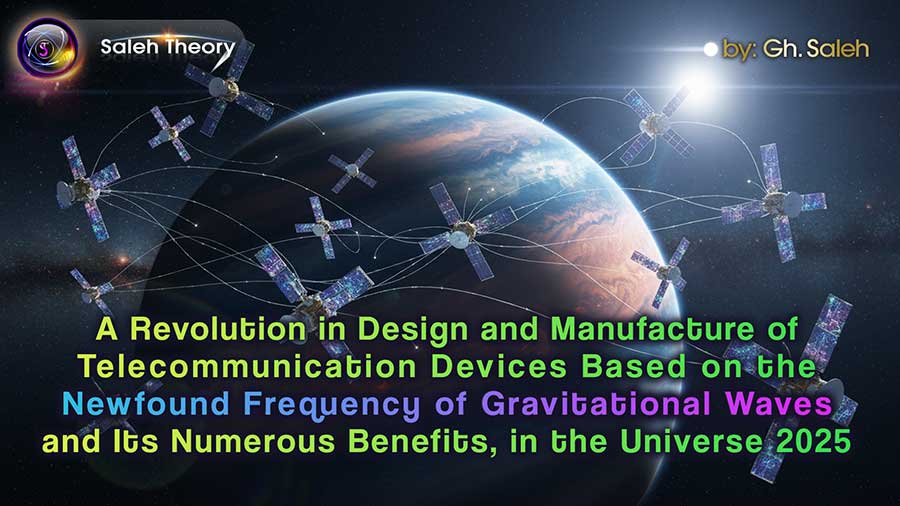
A New Explanation for Whether the Universe Is Flat, Spherical, or Semi-Spherical
Consider an explosion on Earth. A simple explosion causes particles and exploded materials to spread out between the ground and the sky. If you were to take photos of the explosion moment by moment, you could easily see that the particles from any exploded object spread out in a spherical shape.
Of course, we know that the Earth's gravitational force also acts on the particles, pulling them towards the centre of the Earth. However, the acceleration of the explosion is such that it overcomes this force and propels the particles in a spherical and almost uniform manner to a specific radius. The particles are then attracted back towards the ground, forming a circle of particles on the ground.
Given this simple example and the Big Bang phenomenon, which was a massive explosion at the beginning of the universe, we will undoubtedly have a spherical explosion. This is because there is no gravity in a vacuum, and a uniform sphere of gas and tiny particles forms equally in all directions. This enormous sphere of gas and particles is called cosmic inflation. It is a sphere that has grown over time, forming the universe's stars, planets, galaxies, clusters, and superclusters.
Given the uniformity and homogeneity created in the universe, we expect it to be a uniform sphere with a consistent radius. However, due to the internal cohesion of galaxies (the number of stars and their motion models change very, very slowly, taking billions of years for a small change to occur), galaxies essentially have no internal structural changes.
On the other hand, the gravitational force between galaxies, clusters and superclusters and the solidarity of the superclusters make up the Universe, and we have a sphere that is not fixed and static. It rotates around itself on an axis passing through it, as posited by Hubble's Law. This rotation creates a centrifugal force perpendicular to the axis, causing the universe to stretch in that direction. As a result, it takes on a specific shape, as follows:

The presented image in this article is one of the closest depictions of the actual universe. If we imagine an observer (telescope) at the centre of this image looking along the x- or y-axis, and considering that the expansion distance of the universe is roughly twice as much along the x and y axes compared to the perpendicular axis (z), we can estimate a speed of 2C or more for the edges of the universe, in accordance with the ever-valid Hubble's Law.
Therefore, the observer does not perceive any waves or light from the far edges of the universe along the X or Y axes, even when looking with the best telescopes. The observer concludes that no end is visible along the X or Y axes. They see it as infinite or very, very long.
And if the observer looks from the centre of the image towards or along the z-axis, they can receive light or electromagnetic waves from its end. It is as if there is an end on this side, but it is short; however, on the horizontal plane, the observer sees no end. It is because of this phenomenon that we perceive the universe as flat.
However, those who observe the universe as spherical do so because they consider the Big Bang explosion to be uniform in all directions and without rotation, so they expect the universe to be composed of a large, symmetrical spherical globe.
Due to the universe's self-rotation, stretching occurs along the x and y axes because of the centrifugal force. This easily shows that the universe is neither a symmetrical globe nor completely flat, but is a middle ground between them. In reality, it is an ellipsoidal volume
Note:
When objects at the edges of the universe have a speed greater than 2C, their light or waves (which travel at C) never reach the observer because their recession speed is greater than the speed of light. However, on the side with a smaller radius, since the speed of the objects is less than C, their light reaches the observer's eye (detector).
Therefore, we perceive the universe as infinite along the X and Y axes, but we see it as having a limited extent along the other axis. This is why the universe is considered flat
Conclusion:
If we say the universe is perfectly round, that is 50 per cent correct, and if we say the universe is flat, that is also 50 per cent correct. In reality, we can say that the universe is neither flat nor spherical but is something in between, an “ellipsoidal volume”.
References:
[1] Saleh, Gh. "Everything About the Big Bang, From its Beginning to its End." Saleh Theory, 10 Aug. 2025, https://saleh-theory.com/article/everything-about-the-big-bang-from-its-beginning-to-its-end
[2] Saleh, Gh. "7 Arguments for Fundamental Periodicity in Universal Dynamics: Including the Big Bang." Saleh Theory, 19 Jul. 2025, https://saleh-theory.com/article/7-arguments-for-fundamental-periodicity-in-universal-dynamics-including-the-big-bang
[3] Saleh, Gh. "New Discoveries About the Earliest Universe (Big Bang 2025)." Saleh Theory, 12 Feb. 2025, https://saleh-theory.com/article/new-discoveries-about-the-earliest-universe-big-bang-2025
[4] Saleh, Gh. "Hubble's Invariable Law and Its 10 Excellent and Useful Applications." Saleh Theory, 12 Jul. 2025, https://saleh-theory.com/article/hubbles-invariable-law-and-its-10-excellent-and-useful-applications
[5] Saleh, Gh. "A New Explanation for the Principle of Inflation, From the Beginning of the Big Bang Up to the Particle Distribution, Uniformity and Relative Equilibrium in Space, as the Mother of the Formation of Celestial Objects." Saleh Theory, 01 May 2023, https://saleh-theory.com/article/a-new-explanation-for-the-principle-of-inflation-from-the-beginning-of-the-big-bang-up-to-the-particle-distribution-uniformity-and-relative-equilibrium-in-space-as-the-mother-of-the-formation-of-celestial-objects
[6] Saleh, Gh. "A New Explanation for the Big Bang Mechanism from Creation to Explosion." Saleh Theory, 19 Sep. 2022, https://saleh-theory.com/article/a-new-explanation-for-the-big-bang-mechanism-from-creation-to-explosion
[7] Saleh, Gh. "New Discoveries about Hubble's Law." Saleh Theory, 07 Jun. 2022, https://saleh-theory.com/article/new-discoveries-about-hubbles-law
 Download PDF
Download PDF Articles


